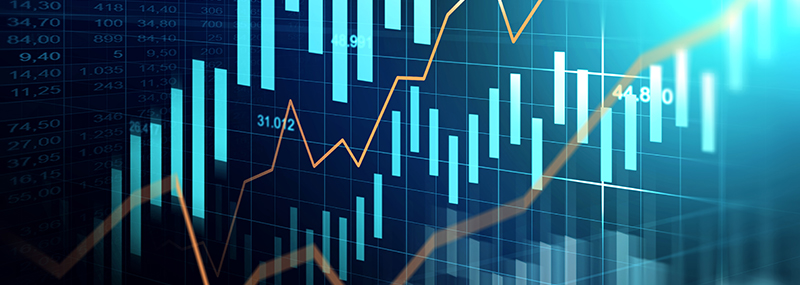Stocks are moving from the P/E-led early cycle to the earnings-driven mid-cycle phase.
by Jurrien Timmer, Director or Global Macro, Fidelity Investments
Key takeaways
- Investors are waiting for the Fed to discuss how the quantitative easing (QE) program will begin to taper off. Markets have taken the signals that it will be ending mostly in stride so far.
- The global financial crisis (GFC) continues to be a relevant analog to today. Markets reacted poorly, with drawdowns across the board, to the Fed's first attempt at tapering in 2010.
- The markets' gains post-COVID have been more widely dispersed than they were in the GFC recovery, so it will be interesting to see the impact tapering will have in this environment.
While the stock market remains in an uptrend (defined as higher highs and higher lows), there has not been much progress since April. To me this is a normal and predictable adjustment as the market transitions from its valuation-driven early-cycle phase to the earnings-driven mid-cycle phase.
At the intersection of these 2 phases lies an attempted policy liftoff from the Federal Reserve. The specter of rate hikes is still a year or 2 away per the Fed's dot plot—which represents the outlook for the federal funds rate, the benchmark interest rate set by the Fed. But we know based on the Fed's history of policy normalizations that it will likely taper the pace of its asset purchases before then.
Currently the Fed is buying $120 billion per month in Treasurys and mortgage-backed securities (MBS). This suggests that at some point in the coming months (Jackson Hole in August?) there will be a more vocal discussion at the Fed about slowing the pace of asset purchases.
So far the markets seem to be taking the signal in stride. After some post-FOMC (Federal Open Market Committee) fireworks that caused a large unwind in the crowded reflation trades, things have quieted down a bit. Treasury Inflation-Protected Securities (TIPS) breakeven spreads have ticked back up a bit, and the 10-year Treasury yield is back up to 1.52%.
Post-GFC analog
The cycle phase transition continues to remind me of 2009–2010. In April 2010 QE1 ended and the market wouldn't have it. A 16% drawdown later and the Fed capitulated into starting up QE2. That period of indigestion was pretty uniform in terms of the style boxes, as was the advance leading up to it. Both large-cap value and large-cap growth corrected by about 15%, while the small cap indexes fell around 22%.
In contrast, the runup to today's cycle transition shows a lot more dispersion, and so far, the correction in the more speculative parts of the market has been more pronounced (as one would expect). How we correct from here, if indeed we do, will be interesting to watch.
The rotation to value
With peak-reopening and peak-inflation likely behind us, I expect some ongoing counter-rotation from growth stocks.
The cycle transition so far can't really be seen at the surface level of the market, other than the fact that the market's uptrend is a lot less pronounced. It reminds me of 1994, which was a stealth correction in which the S&P 500 went sideways for 9 months while there was a great deal of churn beneath the surface. I am not expecting a 9-month consolidation per se, but 1994 was a tightening cycle (a bad one), so the analog is of interest.
This chart gives you some idea of how much rotation there has been below the surface.
Before the bounce in mid-June, only 33% of stocks in the S&P 500 were trading above their 50-day moving average, while the index was making slight new all-time highs. Stealthy indeed.
An earnings-driven recovery
Part of the transition from early cycle to mid-cycle, and from P/E-led to earnings-led, is a peak in the P/E ratio. That seems to be happening now, and it should continue if earnings are going to do the heavy lifting from here.
Speaking of earnings, Q2 earnings season is almost upon us. After a blockbuster Q1, which produced a 53% growth rate (30 percentage points from the start of the season), the Q2 season will start with a 63% estimated growth rate.
Given the huge delta in expected earnings growth, I expect much less of a bump this time around.
About the expert

Jurrien Timmer is the director of global macro in Fidelity's Global Asset Allocation Division, specializing in global macro strategy and active asset allocation. He joined Fidelity in 1995 as a technical research analyst.
Copyright © Fidelity Investments














